Also known as Turkestan, Bukhara, and Transoxiana, which is renowned for its Silk Road cities and is emerging as a hidden gem for ecotourism in Uzbekistan. From its pristine mountains to vast deserts and ancient oases, the country offers travellers authentic nature experiences. Discover sustainable adventures, community-based tourism and untouched landscapes in the heart of Central Asia. In the heart of Central Asia, Uzbekistan—a country renowned for its dazzling architecture and rich history—is emerging as a promising ecotourism in Uzbekistan.
Ecotourism in Uzbekistan allows visitors to explore the country's natural beauty while contributing to its sustainable development.
As more travellers look for eco-friendly travel options, the country stands as proof of the power of sustainable travel in Uzbekistan, transforming the landmarks and the lives of the people who call it home. One can get a taste of local nomadic life by staying a night or two in Tersak, Ertoshsoy, Katta Langar, Sina, Gelon and Nanay villages. Here, one stands at the line where the earth meets the sky, a harmony of silver snow covering the environment with the golden light of the sun, making it a prime destination for nature tourism in Uzbekistan.
Tersak village provides a unique blend of natural beauty, local culture, and hospitality, thus making it a must-visit destination in Uzbekistan. Tersak is undoubtedly a charming village located in the Samarqand Region. It is near the mountain and the falls, making it an excellent location for hiking and walking tours.
Exploring the Historic Silk Road Cities: Sustainable Travel in Uzbekistan
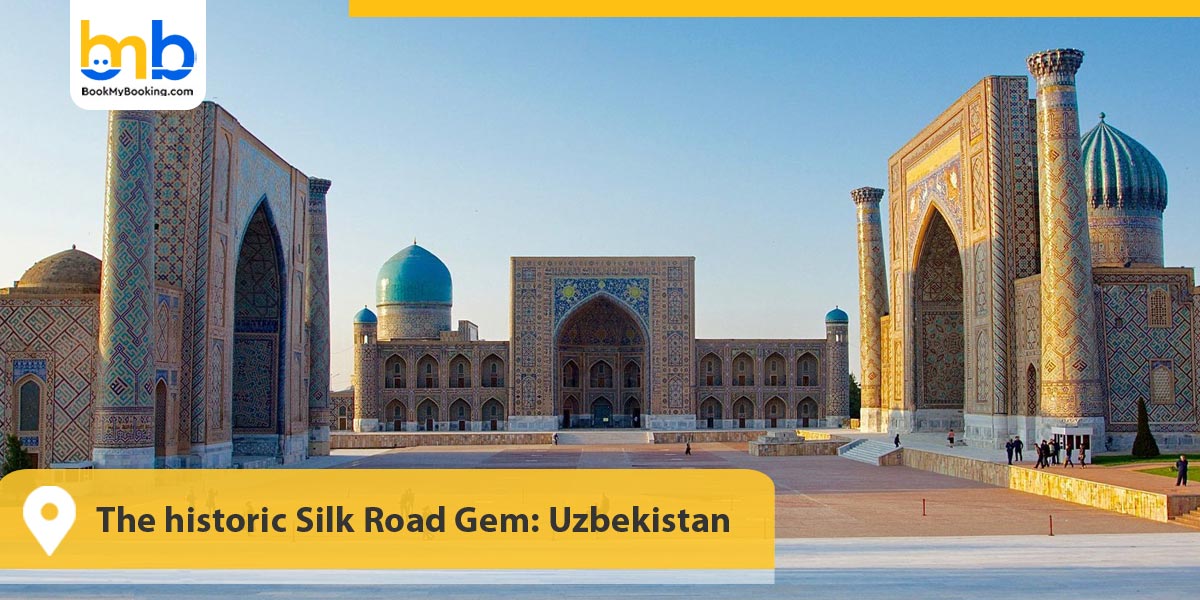
The land of the Mongols is a key player on the ancient Silk Road, offering a distinct blend of rich history and vibrant culture for travellers seeking ecotourism options in Uzbekistan. Uzbekistan's Silk Road cities are increasingly turning towards sustainable practices. These historic sites are designed to minimise their environmental impact.
Sustainable Travel in Uzbekistan: Accommodations
One primary consideration for sustainable travel in Uzbekistan is selecting accommodations that adhere to sustainable practices. Several hotels have adopted green initiatives in cities like Samarkand, Bukhara, and Khiva. All of these hotels consist of facilities such as energy-efficient lighting, water-saving systems, and waste reduction programs.
The hotels of Uzbekistan are hospitable, so every traveller experiences. They serve organic meals made with ingredients from their local farms. By staying at these places, you will help support the local economy and promote eco-tourism in Uzbekistan. Isn't it awesome?
Staying at these accommodations helps reduce your carbon footprint and offers an opportunity to experience the hospitality of Uzbek culture. Many of these eco-friendly lodgings in Uzbekistan are located in historic buildings, allowing guests to immerse themselves in the architectural beauty of the Silk Road era.
Nature Tourism in Uzbekistan
When you are busy exploring Uzbekistan's Silk Road cities, let me tell you! This can be both exciting and sustainable. Many tour operators around the world now offer sustainable travel tours in Uzbekistan, focusing on walking or cycling through ancient streets instead of using motor vehicles. This not only reduces emissions but also provides a closer look at the intricate details of historic destinations.
Those interested in nature tourism in Uzbekistan. They should consider joining a guided hike. That too, in the surrounding mountains or participating in a bird-watching tour. These activities highlight Uzbekistan's natural beauty and emphasise the relevance of preserving its diverse ecosystems.
Supporting Local Artisans and Markets
Local businesses play a key role in ecotourism in Uzbekistan. Its Silk Road cities, vibrant bazaars and artisan workshops offer travellers the chance to purchase handmade goods directly from local artisans. By buying authentic Uzbek textiles, ceramics, and jewellery, you contribute to the conservation of traditional crafts and support the livelihoods of local artisans. Many markets now emphasise ecotourism practices in Uzbekistan, such as reducing plastic use and promoting reusable bags. Tourists can participate in this sustainable economy.
Responsible Tourism in Uzbekistan

The country's food plays a prominent role in sustainable travel in Uzbekistan. These establishments often maintain sustainable practices by minimising waste, supporting regional farmers, and encouraging ecotourism in Uzbekistan. Experiencing authentic Uzbek cuisine delights your taste buds and contributes to a sustainable food system that respects cultural traditions and environmental concerns.
Nature tourism in Uzbekistan refers to the types and methods of cognitive trips of varying difficulty, for which the leading resource and motivation is the natural environment or its elements, landscapes, natural monuments, particular species of plants or animals or a combination thereof. As you are aware, ecotourism in Uzbekistan has become increasingly relevant worldwide each year. Ecotourism is a kind of sustainable tourism that focuses on visits to relatively undisturbed natural areas with minimal human impact. According to the UNWTO (United Nations World Tourism Organisation), nature tourism in Uzbekistan is one of the fastest-growing trends in tourism.
Ecotourism in Uzbekistan involves travelling to natural areas that promote conservation and improve the welfare of local people. Thus, the primary goal of ecotourism in Uzbekistan is to preserve the area's natural, cultural, and ethnographic characteristics without compromising the integrity of the ecosystem and to create an economic environment that benefits the conservation of natural and cultural resources for local communities.
This trend is developing in Uzbekistan with each passing year. Many tour operators offer sustainable travel in Uzbekistan as part of their service portfolio. Moreover, several companies specialise solely in this area. Uzbekistan is not only a world-famous repository of ancient monuments of history and architecture, but the country's natural and climatic characteristics also offer a vast scope for ecotourism, encompassing desert tours, mountain hikes to glaciers, trips to protected areas, and many other activities that are part of the nature tourism in Uzbekistan.
Sustainable Travel vs Ecotourism in Uzbekistan
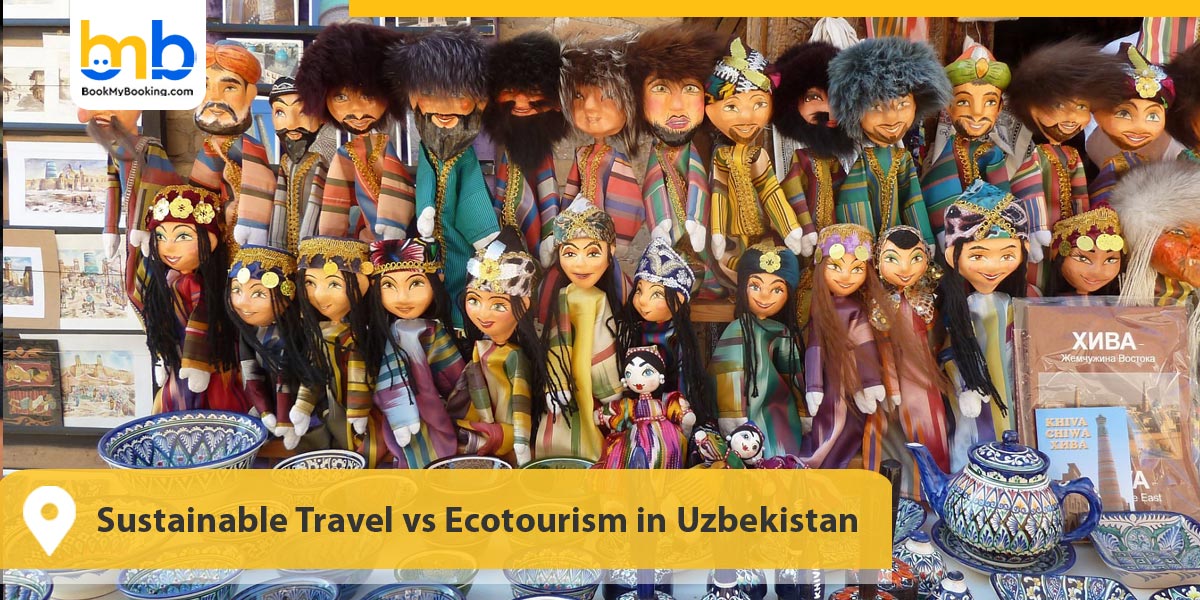
Sustainable travel is a practice that minimises tourism's negative impact on the surrounding and local cultures while maximising its positive contributions to communities and ecosystems. It emphasises responsible resource use, reducing carbon footprint, and supporting regional economies.
Ecotourism is a subset of sustainable travel in Uzbekistan. The driving force behind ecotourism is focused on natural environments. It encourages conservation efforts and provides travellers with chances to engage meaningfully with wildlife, regional habitats, and cultural heritage. Eco-tours often consist of wildlife safaris, hiking in safeguarded areas, or visiting Indigenous communities to learn about traditional practices, fostering sustainable travel in Uzbekistan.
Global Rescue supports Re: Wild, an organisation that has safeguarded and conserved more than 180 million acres, benefiting over 16,000 species in the globe's most remote places for biodiversity. The "Global Rescue ensures that our scientists and conservationists in the field have access to lifesaving help if anything goes wrong across the planet," said Wes Sechrest, CEO and chief scientist of Re: Wild. Sustainable travel in Uzbekistan and ecotourism prioritise environmental guardianship, but ecotourism leans heavily on nature-based experiences and conservation.
How To Travel More Sustainably in Uzbekistan
Travellers can adopt several strategies to make their journeys more sustainable:
1. Select Eco-Friendly Accommodations—Opt for hotels and eco-lodges in Uzbekistan with certifications such as LEED (Leadership in Energy and Environmental Design) or Green Key. Many destinations now offer eco-friendly accommodations, ranging from solar-powered lodges to those that utilise graywater recycling.
2. Reduce Your Carbon Footprint—Fly less and opt for nonstop flights when necessary. Use public transportation, bike rentals, or electric vehicles to reach your destination. Consider offsetting carbon emissions and committing to ecotourism in Uzbekistan via verified programs.
3. Promoting Local Economies- Spending money on local businesses, hiring local guides and buying from local sellers. To ensure your tourism money stays within the community.
4. Avoid Overcrowded Places - Instead of visiting famous spots that are already overcrowded with overtourism. You can even consider exploring some of the well-known but lesser-known locations. All of these off-the-beaten-path destinations would offer original experiences while alleviating pressure on crowded landmarks. Thus promoting sustainable travel in Uzbekistan.
5. Reducing Waste — Carry recyclable items, such as water bottles, straws, and shopping bags, to help minimise waste. Avoid single-use plastics and dispose of waste responsibly.
What is the Future of Sustainable Travel in Uzbekistan?
As climate change awareness and environmental degradation increase, the travel industry is aligning with sustainability practices to address these obstacles, from government initiatives to individual personal choices. Sustainable travel in Uzbekistan is not just a trend but a necessity. Tourists can bring meaningful change by prioritising responsible tourism, supporting local economies and safeguarding the destinations they cherish.

Innovative policies and technologies are driving the future of sustainable tourism. Many countries are introducing robust sustainability guidelines to protect their environments and cultural heritage, thus promoting ecotourism in Uzbekistan.
● Costa Rica - A pioneer in ecotourism, Costa Rica generates significant revenue from its protected natural areas, ensuring long-term conservation efforts.
● New Zealand - Known for its pristine landscapes, New Zealand emphasises cultural and environmental preservation through the Tiriti o Waitangi (Treaty of Waitangi) Promise initiative, similarly to sustainable travel in Uzbekistan.
● Iceland- Iceland even invests in renewable energy, sustainable infrastructure, and sustainable travel programs in Uzbekistan to safeguard its weak ecosystems.
● Bhutan - With a high-value and low-impact tourism strategy, Bhutan limits visitor numbers and ensures that all tourists contribute to preserving its environment and culture.
● Kenya- It is renowned for its wildlife safaris and promotes sustainable travel, akin to ecotourism in Uzbekistan, through conservation programs and community-based tourism initiatives.
Top Places to Visit in Uzbekistan
● Samarkand- Samarkand, one of the oldest cities in the world, is known as the heart of the ancient Silk Road. Its stunning architecture includes the grand Registan Square, the delicate Shah-i-Zinda necropolis, and the magical Gur-e Amir Mausoleum, which tells tales of centuries of trade art and conquest, thus promoting ecotourism in Uzbekistan. Vivacious blue tiles, soaring minarets, and bazaars create an atmosphere of timeless wonder. Walking through Samarkand feels like stepping into a vivid historical painting where ancient culture meets living traditions. It is a UNESCO World Heritage Site that remains one of the most captivating destinations, fostering nature tourism in Uzbekistan and Central Asia.
● Bukhara- Bukhara is a magical city where every corner whispers stories of ancient scholars, traders, and kings. It's a beautifully old town, a UNESCO World Heritage Site that houses treasures like the Po-i-Kalyan complex, the serene Lyabi Hauz Ensemble, and the formidable Ark Fortress. Wander through winding alleys, discover centuries-old madrasahs and domed Bazaars, and experience sustainable travel in Uzbekistan by supporting local artisans and community-driven tourism. Be soothed in the city's spiritual atmosphere. Walking through Bukhara feels like stepping back in time, especially around the Lyab-i-Hauz, a peaceful plaza surrounded by historic buildings and lush greenery. Local artisans selling carpets, ceramics, and embroidered textiles enhance the city's atmosphere, making it a delightful part of Uzbekistan's nature tourism.
● Khiva - Khiva is an open-air museum city, one of Uzbekistan's best-preserved examples of a medieval Silk Road town. Its historic heart, Itchan Kiara, is surrounded by formidable mud brick walls and is listed as a UNESCO World Heritage Site. You will find a labyrinth of narrow alleyways, stunning madrasahs, towering minarets, and bustling bazaars, making it a remarkable destination for ecotourism in Uzbekistan. Walking through Khiva feels like entering a living fairy tale. Highlights include the Kalta Minor Minaret, famous for its turquoise tiles, and the Kanya Ark Citadel, which once served as teh seat of Khiva rulers. With its forest of 200 carved wooden columns, the Juma Mosque offers a unique architectural experience, making Khiva a must-visit destination for those interested in nature tourism in Uzbekistan.
● Tashkent - Uzbekistan's capital and largest city- offers a fascinating mix of Soviet-era architecture, leafy parks, bustling bazaars, and Islamic monuments. After much of the town was rebuilt following a devastating earthquake in 1966, Tashkent developed a modern yet distinct identity. Visit the stunning Khast Imam Complex, home to the world-famous Quran of Caliph Uthman, one of the oldest Qurans. Explore Chorsu Bazaar, a vibrant traditional market in the country, featuring a giant blue-domed roof that fosters ecotourism in Uzbekistan. Here, you can sample local spices, fruits, and crafts. Tashkent's metro system, one of the oldest in Central Asia, serves as a gallery of Soviet architecture and design, featuring beautifully decorated stations.
● Fergana Valley - The Fergana Valley, situated in eastern Uzbekistan, is one of Central Asia's most fertile and culturally rich regions, promoting nature tourism in Uzbekistan. The country's agricultural heartland is renowned for its vibrant towns, lush landscapes, and traditional craftsmanship. Cities like Margilan, Andijan, and Kokand each provide unique glimpses into Uzbekistan's diverse heritage. The lively valley bazaars are treasure troves of handmade pottery, ceramics and intricate embroidery. Unlike the more monumental cities of Samarkand and Bukhara, the Fergana Valley offers a more personal and intimate sustainable travel experience in Uzbekistan, where local traditions are very much alive. It is a must-visit for travellers wanting to delve deeper into authentic Uzbek culture, meet local artisans and explore a picturesque side of the country rarely seen by mass tourism.
● Termez - Located near the Afghan border, is one of the country’s oldest and most intriguing cities, fostering ecotourism in Uzbekistan. A melting pot of cultures, it holds the remnants of Buddhist stupas, Islamic mausoleums and ancient fortresses. Key sites include the Kara Tepe Buddhist monastery ruins, the grand Sultan Saodat complex, and the archaeological museum, which is filled with artefacts from the Silk Road. Termez remains untouched by mass tourism, offering a world filled with Silk Road artefacts, thereby promoting the idea of ecotourism in Uzbekistan. Termez remains largely untouched by mass tourism, offering an off-the-beaten-path experience for history enthusiasts.
Nature Reserves in Uzbekistan
Uzbekistan is a country in Central Asia with a wonderful and diverse natural landscape featuring mountains, steppes, and deserts across its vast expanses. It was for this purpose that the country's government, during different periods, established some of the best nature reserves in Uzbekistan, whose primary goal was the preservation and respect for nature and its resources. Due to the striking contrast of natural zones, Uzbekistan's reserves are notable for their remarkable diversity of flora and fauna. Under the auspicious of some of the best nature reserves in Uzbekistan is home to endangered species such as lynx, snow leopard, stone marten, screw horned goat, Bukhara deer Hangul and many others. Today, the country has over 10 reserves and protected areas, including some of the most notable and best nature reserves in Uzbekistan, which are described below.
- Nature Reserves in Uzbekistan: Nurata
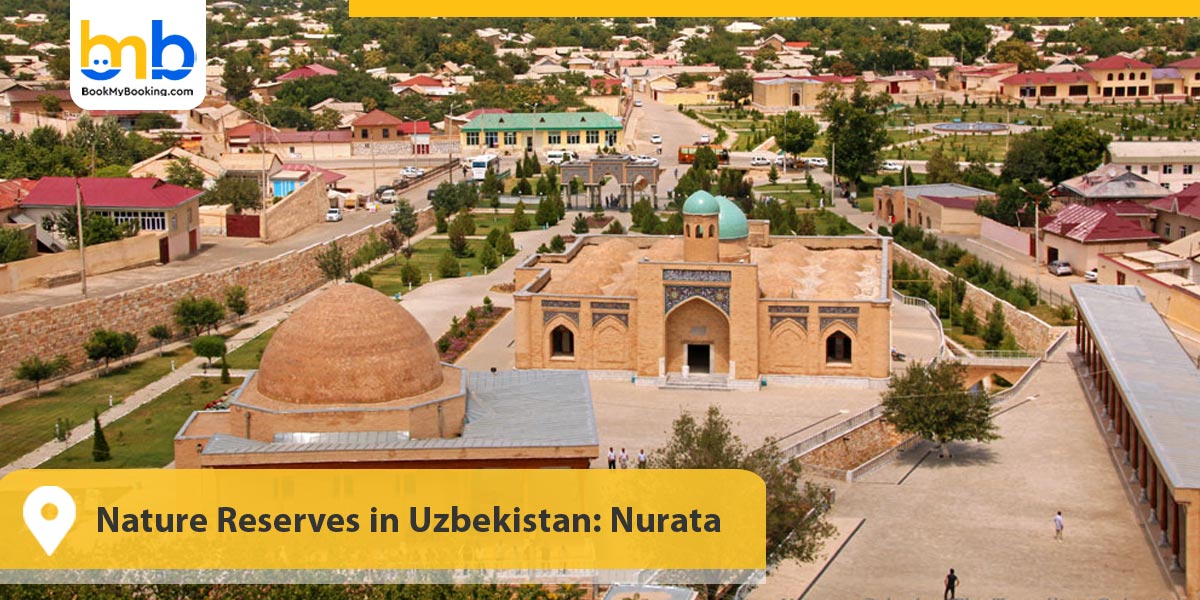
Nurata Reserve is one of the best nature reserves in Uzbekistan, established in 1976. As the name suggests, it is situated in the central part of the Nuratau ridge. One of the best nature reserves in Uzbekistan is located at an altitude of 500-2100 meters above sea level and covers an area of approximately 18,000 hectares. In the reserve, walnut fruit, juniper and mountain forest ecosystems. The Nurata Reserve is the only habitat for the population of Severtsev ram, which is listed in the Red Book of Uzbekistan. The reserve is currently becoming one of the most famous destinations in the field of nature tourism in Uzbekistan. Horseback riding, water sports, and hiking trips, as well as other types of active and passive activities such as bird watching, camping in tent camps, mountain visits, fishing, water tourism, botanical excursions, archaeological tourism, and observing numerous insect species, attract nature lovers.
- Nature Reserves in Uzbekistan- Chatkal State Reserve
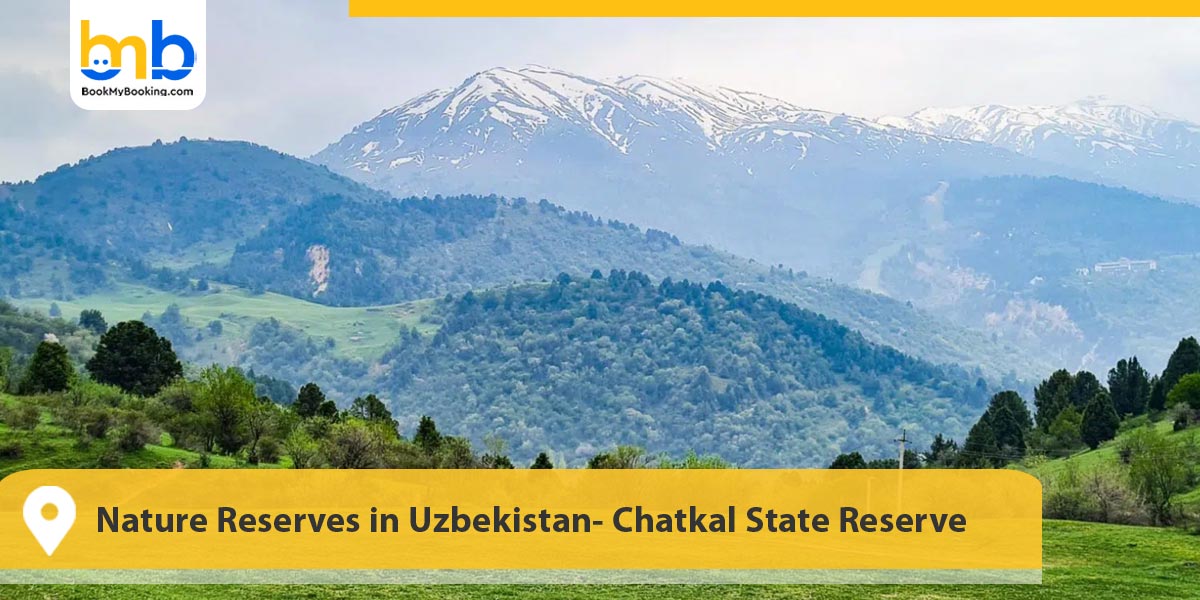
Chatkal State Reserve, one of the best Nature reserves in Uzbekistan, is considered one of the oldest in the country, as it was established in 1947. The reserve is located in the Western Tien Shan, Tashkent region, on the slopes of the Chatkal mountain range. The reserve covers an area of approximately 35,000 hectares. The Chatkal Reserve is a highly picturesque area that promotes responsible tourism in Uzbekistan. It is distinguished by its hard-to-reach areas, including cliffs, beautiful mountain peaks over 4600 meters above sea level, and deep gorges with crystal-clear rivers and lakes. The Western Tien Shan mountain range was inscribed on the UNESCO World Heritage List in 2016.
- Nature Reserves in Uzbekistan: Gissar National Reserve
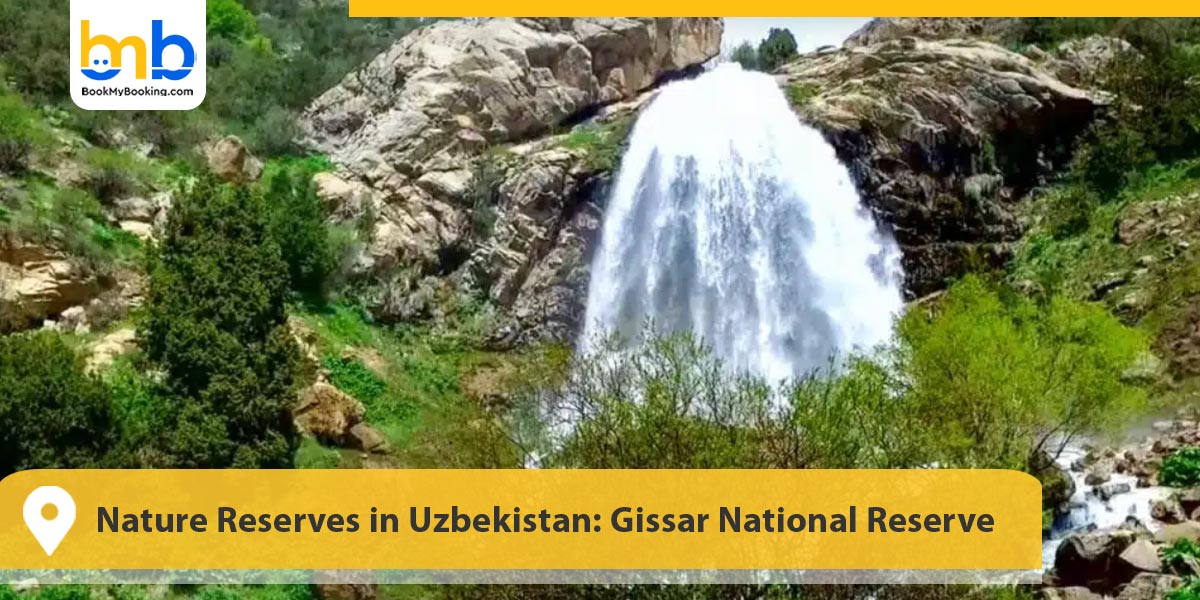
The Gissar National Reserve has a history dating back to 1994, resulting from the merger of the Kyzylsuisky and Mirakinsky areas, which are among Uzbekistan's best nature reserves. The Gissar Reserve spans approximately 81,000 hectares of territory. The reserve's landscape is typically mountainous, with numerous gorges, karst caves, streams, rivers, and waterfalls. The primary purpose of the creation of the reserve was the preservation of mountain ecosystems and the chief inhabitant of this region, the snow leopard. The reserve's flora is also diverse, including hardwoods such as Turkistan maple, barberry, dog rose, and juniper, promoting nature tourism in Uzbekistan. The Gissar reserve is of great interest to lovers of mountain tourism. The rocky terrain offers ample space for climbers and hiking enthusiasts. Within the reserve are preserved several archaeological sites, a rock with fossilised dinosaur footprints, the Cave of Tamerlane, the Grand Canyon of Kalasay, and numerous colourful mountain villages where you can stay overnight and get acquainted with the traditional way of life of the locals, fostering sustainable travel in Uzbekistan.
- Nature Reserves in Uzbekistan: Kyzylkum Nature Reserve
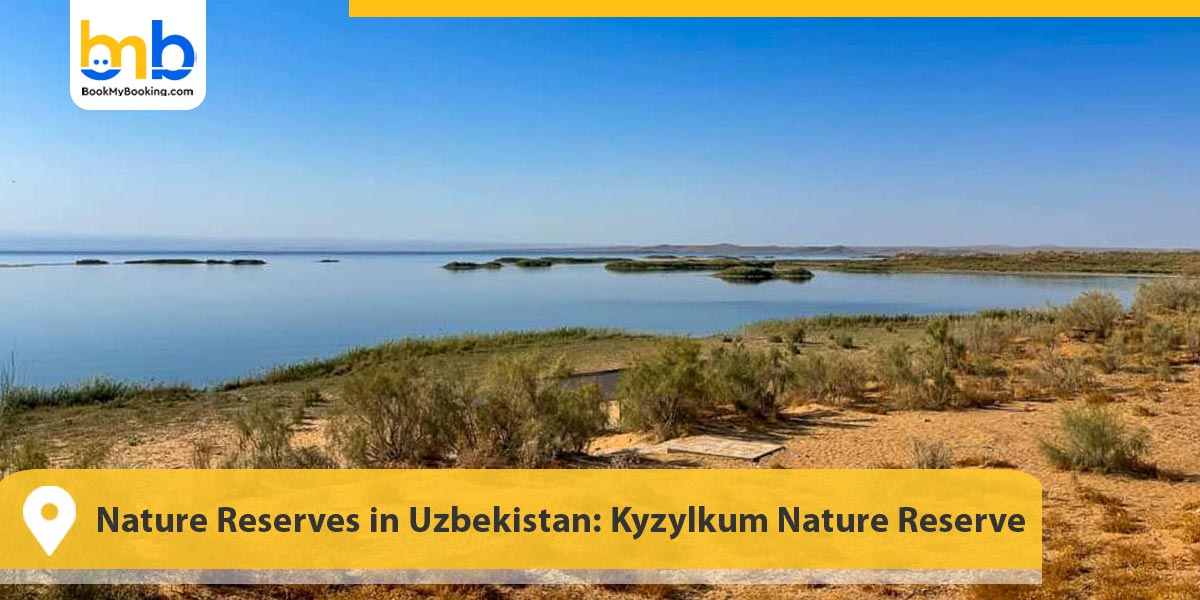
The Kyzylkum Reserve was established in 1971 for the protection and enhancement of the livestock of the Bukhara deer, the indigenous inhabitants of these lands, as well as to preserve the sugar-sandy ecosystem with its rich biodiversity in one of
Uzbekistan's best nature reserves. Thanks to the reserve's recent activities in the fight against poachers, there is a tendency for a gradual increase in the number of deer, which now stands at approximately 200 heads. Most of the reserve extents align with the Amu Darya River, promoting nature tourism in Uzbekistan. The reserve's territory is characterised as desert sandy with forest vegetation zones, floodplain forests, and meadows, which occupy more than 50% of the land, and the remaining 50% is desert.
Final Takeaway on Ecotourism in Uzbekistan
Embarking on an ecotourism experience in Uzbekistan's Silk Road cities allows travellers to explore history and culture while promoting sustainability. By selecting green accommodations, participating in environmentally conscious activities, supporting local artisans, and making responsible dining choices, you can enjoy a fulfilling travel experience that respects the planet and its people.
More travellers are embracing sustainable travel in Uzbekistan. The historic cities are paving the way for a greener future. By integrating, you help preserve the beauty and heritage of this remarkable region for generations to come.


